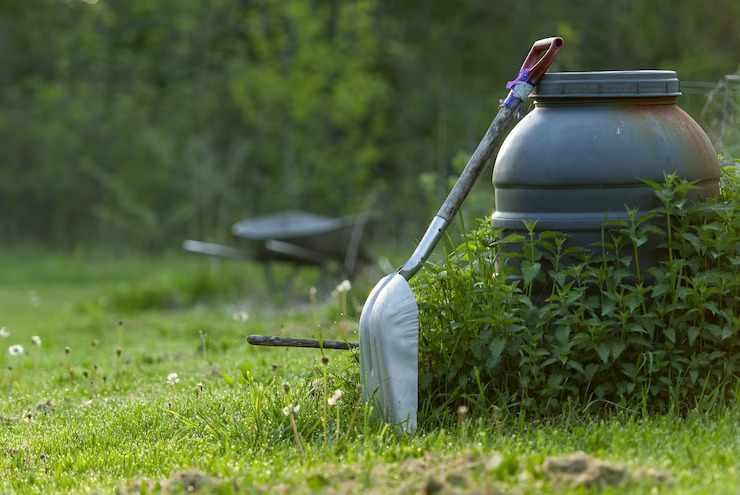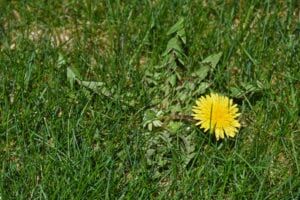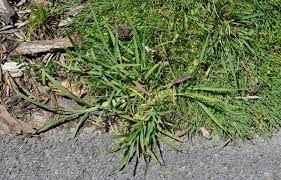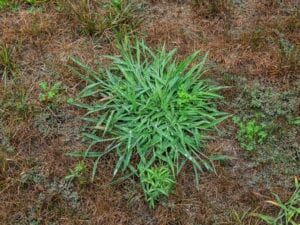
Our dream is to have a lush and beautiful green lawn, especially in this summertime. But what if weeds pop up between the blades of grass on your lawn? Occasionally, the weeds can get out of control and overtake a yard. Nobody wants their lawn to be overrun with weeds, so it is essential to keep control of them. Read on our ten steps to get rid of weeds in your lawn.
1. Identify the weeds
Determine the types of weeds present in your lawn. Different weeds may require specific control methods. There are a few different types of weeds to be aware of:



- Broadleaf weed. These weeds include dandelions, clover, ground ivy, oxalis, chickweed, thistle, dollar weed, and plantain. The leaves on these weeds are broad and flat.
- Grassy weed. These weeds include crabgrass, foxtail, annual bluegrass, and quackgrass. These weeds grow in blades and look like grass.
- Grass-like weed. These weeds include nut sedge, wild onion, and wild garlic. These weeds may look somewhat like grass, but they grow in a more tubular and hollow shape.
2. Manual removal
For a small number of weeds or isolated patches, you can manually remove them by hand. Wear gloves and use a hand trowel or weed-pulling tool to loosen the soil around the weed’s roots and carefully lift it out. Make sure to remove the entire root system to prevent regrowth.
3. Mowing
Regularly mow your lawn to keep the grass at an appropriate height. This helps shade out weed seedlings and prevent them from establishing. Here’s a guide to mowing your type of grass.
Warm Climate Grasses
- Bahia grass: 2- to 3-in.
- Bermuda grass: 1/2- to 1-in.
- Blue grama grass: 2- to 3-in.
- Buffalo grass: 2- to 3-in.
- Carpetgrass: 1- to 2-in.
- Centipedegrass: 1- to 2-in.
- St. Augustinegrass: 1- to 3-in.
- Zoysia grass: 1/2- to 1-in.
Source: Family Handyman
Cool Climate Grasses
- Bent grass: 1/4- to 3/4-in.
- Chewing hard or red fescue: 1-1/2 to 2-1/2-in.
- Tall fescue: 1-1/2 to 3-in.
- Kentucky bluegrass: 1-1/2 to 3-in.
- Perennial ryegrass: 1-1/2 to 3-in.
Source: Family Handyman
4. Watering
Properly water your lawn to encourage healthy grass growth. Deep watering infrequently is more effective than frequent shallow watering. This helps promote a strong, thick lawn that can better compete with weeds.
5. Fertilizing
Apply a balanced lawn fertilizer according to the recommended schedule and rate. A well-fertilized lawn helps maintain its health and competitiveness against weeds.
6. Over-seeding
If your lawn has bare or thin areas, overseed with grass seed to promote thicker turf. A dense lawn will help crowd out weeds and prevent them from taking hold.
7. Weed control products
Consider using selective herbicides specifically designed to target weeds while sparing your lawn. Read and follow the product instructions carefully, including application rates and timing. Apply herbicides when the weeds are actively growing and avoid applying them on windy days to prevent drift onto desirable plants.
Note: If you use a herbicide, choose one that’s labeled as safe for the type of turf you’re growing and effective against the weeds you’ve got. The label states when and in which conditions to use the product. Some herbicides work only within a certain temperature range; others work only when applied at a specific time of year. Herbicides fall into three categories: preemergence herbicides, postemergence herbicides, and weed-and-feed products.
8. Mulching
Use organic mulch, such as wood chips or straw, around flower beds and garden borders to prevent weed growth. Mulch helps block sunlight and suppress weed germination.
9. Regular maintenance
Keep up with regular lawn maintenance tasks, such as regular mowing, watering, fertilizing, and overseeding as needed. Maintaining a healthy lawn is the best defense against weed infestations.
10. Prevention
To prevent future weed growth, take steps to minimize weed seeds from entering your lawn. This can include keeping your tools and equipment clean, controlling weeds in neighboring areas, and avoiding overwatering or overfertilizing, which can encourage weed growth.
Remember, patience and persistence are key when dealing with weeds. It may take time and multiple efforts to achieve a weed-free lawn. Suppose you have a severe weed problem or are unsure about the best approach for your situation. In that case, it’s recommended to consult with a lawn care professional or your local agricultural extension office for guidance and advice. Find maintenance, contact us.

Comments